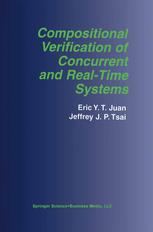

Most ebook files are in PDF format, so you can easily read them using various software such as Foxit Reader or directly on the Google Chrome browser.
Some ebook files are released by publishers in other formats such as .awz, .mobi, .epub, .fb2, etc. You may need to install specific software to read these formats on mobile/PC, such as Calibre.
Please read the tutorial at this link: https://ebookbell.com/faq
We offer FREE conversion to the popular formats you request; however, this may take some time. Therefore, right after payment, please email us, and we will try to provide the service as quickly as possible.
For some exceptional file formats or broken links (if any), please refrain from opening any disputes. Instead, email us first, and we will try to assist within a maximum of 6 hours.
EbookBell Team

4.0
36 reviewsWith the rapid growth of networking and high-computing power, the demand for large-scale and complex software systems has increased dramatically. Many of the software systems support or supplant human control of safety-critical systems such as flight control systems, space shuttle control systems, aircraft avionics control systems, robotics, patient monitoring systems, nuclear power plant control systems, and so on. Failure of safety-critical systems could result in great disasters and loss of human life. Therefore, software used for safety critical systems should preserve high assurance properties. In order to comply with high assurance properties, a safety-critical system often shares resources between multiple concurrently active computing agents and must meet rigid real-time constraints. However, concurrency and timing constraints make the development of a safety-critical system much more error prone and arduous. The correctness of software systems nowadays depends mainly on the work of testing and debugging. Testing and debugging involve the process of de tecting, locating, analyzing, isolating, and correcting suspected faults using the runtime information of a system. However, testing and debugging are not sufficient to prove the correctness of a safety-critical system. In contrast, static analysis is supported by formalisms to specify the system precisely. Formal verification methods are then applied to prove the logical correctness of the system with respect to the specification. Formal verifica tion gives us greater confidence that safety-critical systems meet the desired assurance properties in order to avoid disastrous consequences.